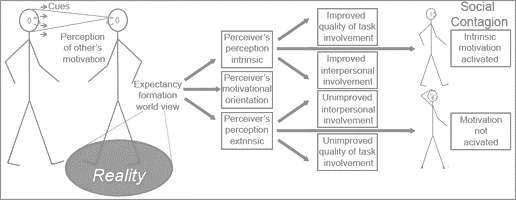Social Contagion Theory
Acronym
N/A
Alternate name(s)
Behavioral contagion, contagion theory
Main dependent construct(s)/factor(s)
Behavior, Usage, Adoption
Main independent construct(s)/factor(s)
Social ties, Tie centrality, Tie strength, Social and spatial proximity, Potency of influence
Concise description of theory
Although the social contagion concept has been around for a long time as an explanation for social phenomena primarily through Gustave Le Bon’s book “The crowd: A study of popular mind” (1895), it’s relevance as a theory of social influence was recognized only recently. Social contagion theory tries to understand social influence that explains how people’s perceptions, attitudes, and behaviors are transformed primarily through interpersonal processes, and these mainly occurs within social networks of the individuals. Hence, the theory implies that individuals’ thoughts, emotions and behaviors are influenced by displayed emotions of other individuals who are part of their network. When making decisions or tackling problems, people look at cues from others who have faced the same situations. The theory argues that an individual’s communication makes an ego and an alter within members of the nearest network and this closeness results in contagion, resulting in beliefs converging among the socially related pairs. This social influence based on proximity is explained by the theory as caused by two underlying mechanisms- social comparison and interaction. While social comparison is influenced by the structural similarity between each individuals’ connections within the network, communication is measured through the centrality and strength of connections in a network. Unlike an epidemic, social contagion requires multiple interactions to spread and hence its modeling is rather complex. But the fundamental building block is pairwise interactions itself. Further, social contagion can be either accidental or intentional depending on whether those who infect are trying to infect or not.
Source: (Venkatesh et al. 2020) (Burt 1987)
Diagram/schematic of theory
(Deci, E. L., and Ryan, R. M. 2004. Handbook of Self-Determination Research, University Rochester Press.)
Source : Website : http://www.learning-knowledge.com/contagion.html
Originating author(s)
Burt 1987
Christakis and Fowler 2007
Christakis and Fowler 2013
Seminal articles
Burt, R. S. 1987. “Social Contagion and Innovation: Cohesion versus Structural Equivalence,” American Journal of Sociology (92:6), University of Chicago Press, pp. 1287–1335.
Christakis, N. A., and Fowler, J. H. 2007. “The Spread of Obesity in a Large Social Network over 32 Years,” New England Journal of Medicine (357:4), Massachusetts Medical Society, pp. 370–379.
Christakis, N., and Fowler, J. 2013. “Social Contagion Theory: Examining Dynamic Social Networks and Human Behavior,” Statistics in Medicine (32).
Originating area
Social psychology, Sociology, Medicine
Level of analysis
Individual, group, network
Links to WWW sites describing theory
Memetics and social contagion
Wikipedia – behavioral contagion
https://en.wikipedia.org/wiki/Behavioral_contagion
Communicationtheory.org
https://www.communicationtheory.org/contagion-theory/
Links from this theory to other theories
IS articles that use the theory
Aral, S., and Walker, D. 2011. “Creating Social Contagion Through Viral Product Design: A Randomized Trial of Peer Influence in Networks,” Management Science (57:9), INFORMS, pp. 1623–1639.
Angst, C. M., Agarwal, R., Sambamurthy, V., and Kelley, K. 2010. “Social Contagion and Information Technology Diffusion: The Adoption of Electronic Medical Records in U.S. Hospitals,” Management Science (56:8), INFORMS, pp. 1219–1241.
Canossa, A., Azadvar, A., Harteveld, C., Drachen, A., and Deterding, S. 2019. “Influencers in Multiplayer Online Shooters: Evidence of Social Contagion in Playtime and Social Play,” in Proceedings of the 2019 CHI Conference on Human Factors in Computing Systems, CHI ’19, New York, NY, USA: Association for Computing Machinery, May 2, pp. 1–12.
Plé, L., and Demangeot, C. 2020. “Social Contagion of Online and Offline Deviant Behaviors and Its Value Outcomes: The Case of Tourism Ecosystems,” Journal of Business Research (117), pp. 886–896.
Venkatesh, V., Sykes, T., and Zhang, X. 2020. “ICT for Development in Rural India: A Longitudinal Study of Women’s Health Outcomes,” Management Information Systems Quarterly (44:2), pp. 605–629.
Contributor(s)
Labeeba K, Doctoral Student at Indian Institute of Management, Kozhikode, India
Date last updated
19/11/2020 Please feel free to make modifications to this site. In order to do so, you must register.
